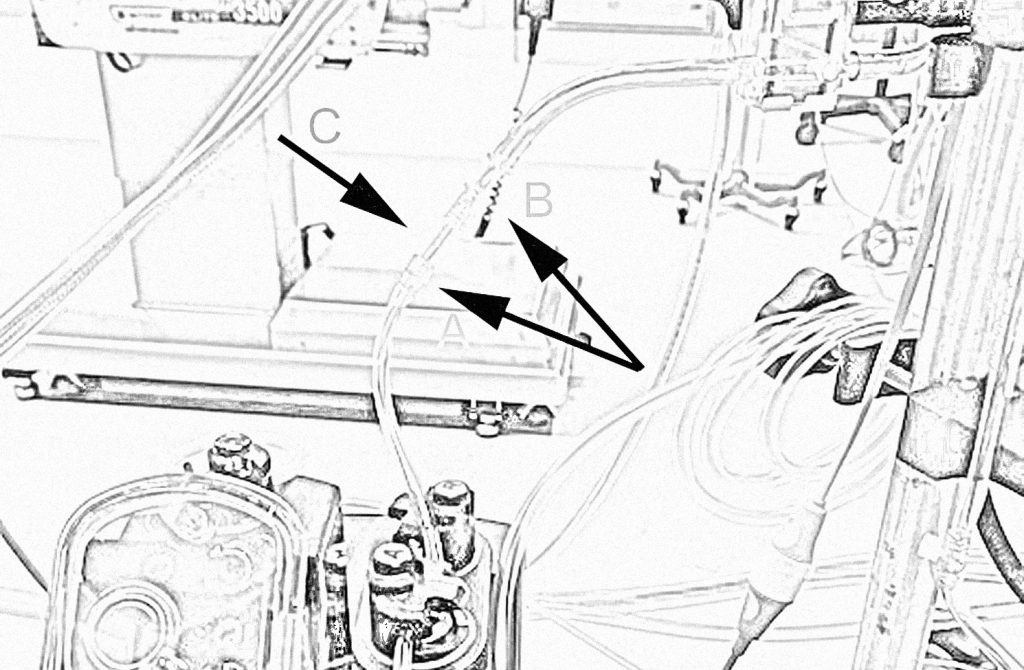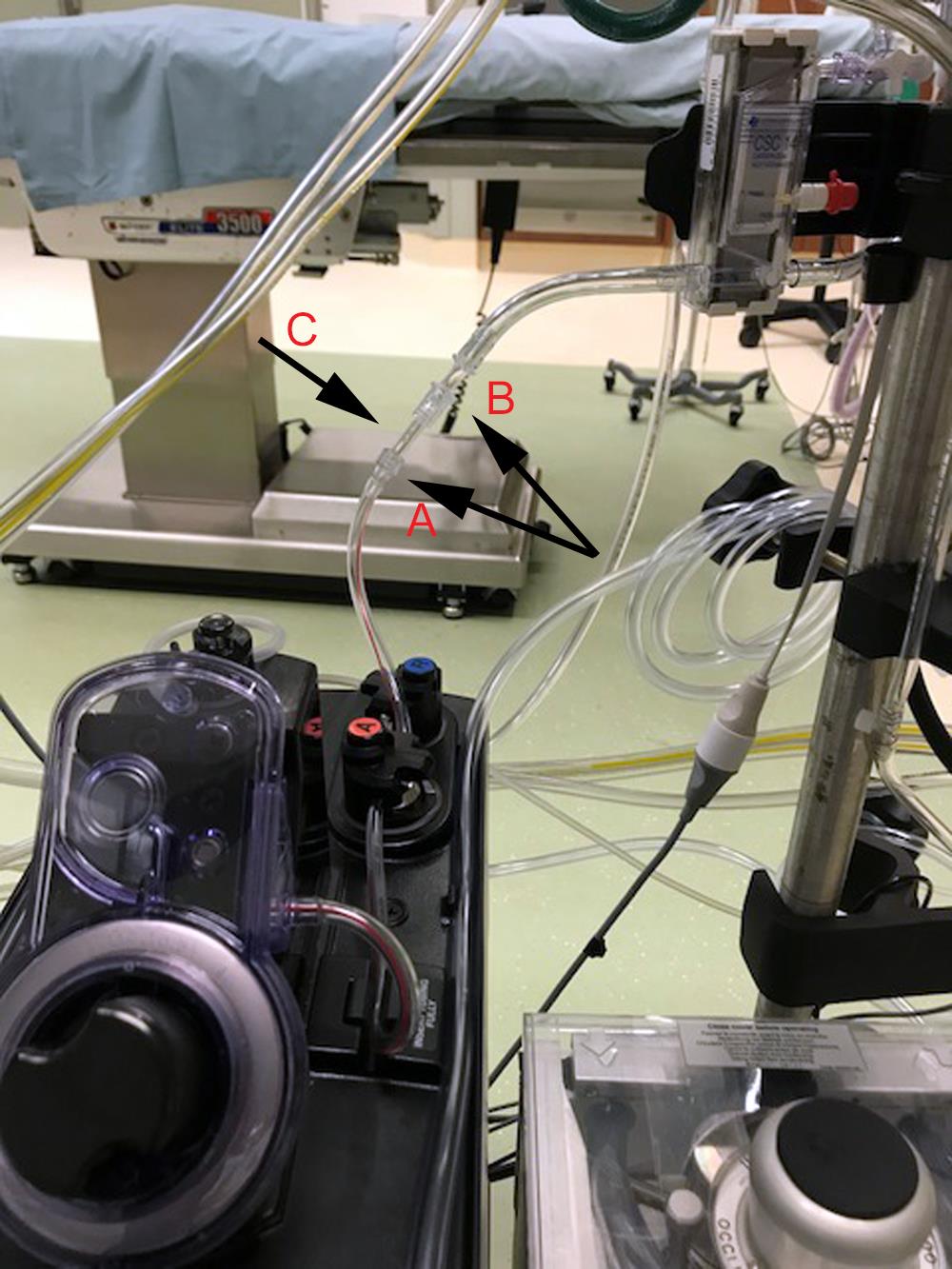A Locum’s ScrapBook: Super Charging Your Hypothermic Cardioplegia- “A Work Around…”

Editor’s Note:
To view the entire “Locum’s ScrapBook” series- click here
My life is Family First and then Perfusion. I switched from staff perfusionist to becoming a Locum’s traveler to make sure my kids and family would have a solid place to call home. I travel because it puts me in charge of my life, it is challenging, and I enjoy learning new techniques, other ways of doing things, as well as getting exposure to alternate approaches and paradigms.
So I took my show on the road. As such, every once in awhile I will be dropping a few notes and pictures of places visited, and observations made. In a sense, the beginning of a scrap book on Open Heart Surgery in America (and other places if possible).”
Enjoy 🙂
Frank
Super Charging Your Hypothermic Cardioplegia- A Work Around…
(It’s really more appropriately termed- improving your temperature exchange coefficient) 🙂
I ran into a a somewhat uncommon situation at a new Locum’s assignment, where the cardioplegia system being deployed was failing to meet the hypothermic thresholds our cardiac surgeon wanted to achieve. Now I have seven years experience using this particular system prior to this- and never really encountered any issues in terms of achieving myocardial temperatures of 10 degrees C or lower. For whatever reason, and certainly based on very recent personal observation, that threshold wasn’t being met- so prior to my arrival, the perfusion group I was assisting, had employed an interestingly novel “piggy back” solution to help cool the perfusate more effectively.
As a refresher- the factors influencing and mediating the temperature of perfusate delivery to the myocardium are as follows:
- Temperature of the crystalloid portion of the perfusate
- Temperature of the circulating blood
- Counter-current versus concurrent flow pathways of the cooling fluid in relation to the blood pathway
- Ratio of Crystalloid to Blood
- The rate of Q being delivered to the heart
- The quantity delivered to the heart
- Appropriate positioning of the X-Clamp
- Aortic Insufficiency
- Myocardial thickness
- Enough patent coronary vasculature to deliver the perfusate to all areas of the myocardium
- Absence of anomalous pulmonary venous return
- Absence of substantial coronary collaterlization stemming from an unobstructed source of coronary perfusion to the heart
As we all know- a cold heart’s metabolization requirements diminish exponentially by 50% per 7 degrees C as it cools down- therefore that would imply that a heart reaching a temperature of 30 C would require 50% less than at Normathermia (37 degrees C)- and thus extrapolated to cooling further and achieving a myocardial temperature of 9 degrees C- the metabolic requirement would have decreased to 6.25% of a normathermic heart- allowing for extended ischemic tolerance as well as improved myocardial protection.
Social Media Comments …
On to the Discussion …
Since for whatever reason- we/they were unable to reach those thresholds (sub 10 degrees C) we/they needed a work around. And the work around represented another small cardioplegia circuit in tandem with the system we were using. The following diagram draws a picture of the improvised technique- as well as a couple of cute little perfusion adjustments for connection incompatibilities that arose as we/they modified the circuit.
One observation/Question in hindsight after watching this cardioplegia system in use:
- Did the extra cardioplgia unit/filter increase Q resistance to the point that the perfusionist delivering the perfusate wasn’t flowing fast enough due to implied increased line pressure constraints?
- Was line resistance and an increased line pressure a factor in the perfusionists reluctance to exceed what we consider pressure delivery norms for cardioplegia (150-225 mmHg)?
- As a result- due to the increased Q limitations subsequent to increased Line pressures, did we actually reduce our target Q to such a point that < Q outweighed whatever boost we got from the addition of the extra Cardioplegia assisting add-on?
Anyway- here is how we/they and then we again (as we ran out of the cardioplegia systems that had been deployed- and had to integrate a similar yet different system into the ECC), here is how that design process went down.
The primary cardioplegia delivery system:
Modifying the ECC- required one major cut to remove excess tubing: the line diameter of the primary Cardioplegia circuit is 3/16″. with a M-M adaptor. The “piggy-back” delivery system is a 4:1 1/4″ line system, that needed to be cut down to where the two lines (1/4) end- and the straight 1/4″ is all that remains before hitting the conducer/frame of the plegia system. The primary system is left intact- including it’s M-M connector. The objective now is to insert an coupling system to connect to a now free and clear 1/4″ line 🙂
Here we see the mating of the original and intact 3/16 tubing with a M-M connector- to a F-F connector that was then connected to a perfusion (1/4 adaptor) that inserts to the free end of a 1/4″ line to the piggy-back plegia system.
The Final Product!
A= Male leur lock adaptor coming from the primary Cardioplegia System.
B= Male end of Perfusion Adaptor inserted into cut 1/4″ inlet line of the “piggy-Back” system.
C= F-F adaptor required to couple the two M_M connectors together 🙂







